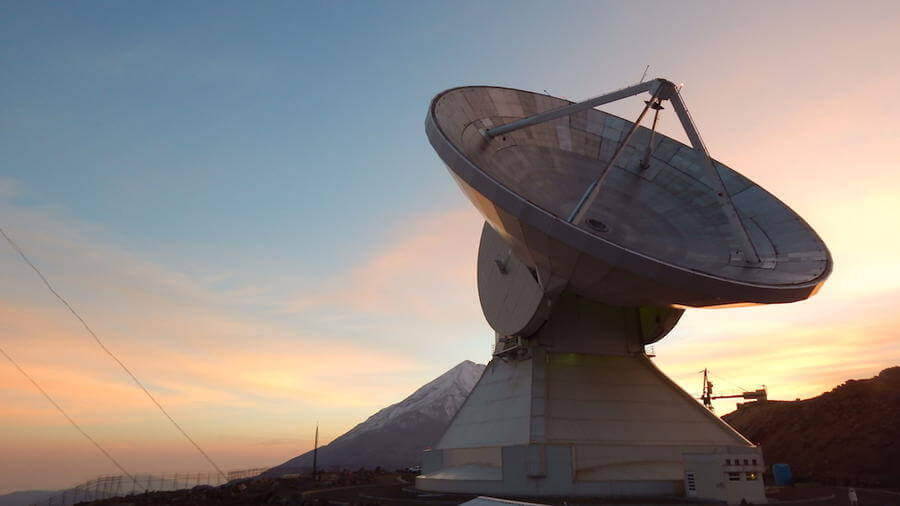- Get link
- X
- Other Apps

Astrophysicists hope that in the next 12 months they will get what nobody has ever been able to do. What can change or at least supplement our understanding of the universe. Black holes are astrophysical objects that have such a powerful attraction force that nothing can escape them. Even light. Albert Einstein once predicted their existence in his general theory of relativity, but to this day no one has ever seen them. All our knowledge of them is only theoretical, except for observing the effects they have on other objects in space. But the Event Horizon Telescope project can change this.
Event Horizon Telescope is eight telescopes located in six points of the globe and united into a single network. Working in unison, they have enough power to get an image of a black hole. At least this is the opinion of the scientists responsible for this project.
"First, you need ultra-high resolution. Imagine an equivalent that allows you to see the grooves on a golf ball located in Los Angeles while you are in New York, "says Sheperda Duleman, project manager of Event Horizon Telescope.
Secondly, continues Duleman, you will need to somehow break through the gas and dust of the Milky Way, as well as the hot gas surrounding the very black hole. This will require the presence of a telescope the size of the Earth. This is where Event Horizon Telescope comes into play.

Large telescope millimeter range. The largest of its kind and represents one of the components of Event Horizon Telescope
Using a network of separate radio telescopes scattered around the planet, the Event Horizon Telescope team created a "virtual Earth-sized telescope," Duleman said. Scientists synchronized the operation of these systems and programmed in such a way that they could simultaneously monitor and record data on the received radio waves on electronic media. Researchers are confident that by further combining the data obtained, it will be possible to obtain an image that in quality and accuracy will be equivalent to an image that could be obtained if you had a telescope the size of a planet.
In April 2017, scientists for the first time tested their virtual telescope. For five nights, eight radio trains located at six points on the planet were directed toward the Sagittarius A * radio source, which is in the center of our galaxy. Scientists believe that this source is a supermassive black hole.
Due to the "winter period of silence" until mid-December, there was no way to collect data from the Southern Polar Telescope and transmit them to the Mystery of the Massachusetts Institute of Technology, the Heistack Observatory. Now, when scientists have received all the data from all eight radio telescopes, they can begin their analysis, and, of course, hope to get the first real black hole image in history.
The importance of work is difficult to overestimate. After all, if the image really does get, then it will not only be the first real proof of the existence of black holes, but it can also open up new knowledge about our universe.
"The importance of black holes for the universe is very great. It is believed that supermassive black holes located in the centers of galaxies evolve along with their galaxies. So if we can see what is happening on their horizon of events, it will help us better understand how the universe works, "explains Duleman.
Astrophysicists are sure that in the future they will be able to receive images of black holes much more often. And this, in turn, will allow us to determine whether the described in the general theory of relativity of Einstein concerning their boundaries. In addition, scientists will be able to study in more detail the features of the process of absorption of black holes of matter and their growth in size, adds Duleman. However, here it also explains that the April observation of Sagittarius A * was only the first trial use of the virtual system Event Horizon Telescope, so there is some chance to be disappointed in the results.
"Of course, we can not guarantee that we will see anything at all. In the end, nature can play a cruel joke with us. However, the Event Horizon Telescope system is now fully functional, so for the next few years we will continue to try to get the image and see what a black hole really looks like, "Duleman said.
Although the team of scientists can not wait to get the first image of a black hole, they do not rush to analyze the data and conduct a thorough and very careful check. Therefore, more precise information about when this work will be completed, Duleman does not indicate.
The article is based on materials .
- Get link
- X
- Other Apps
Comments
Post a Comment